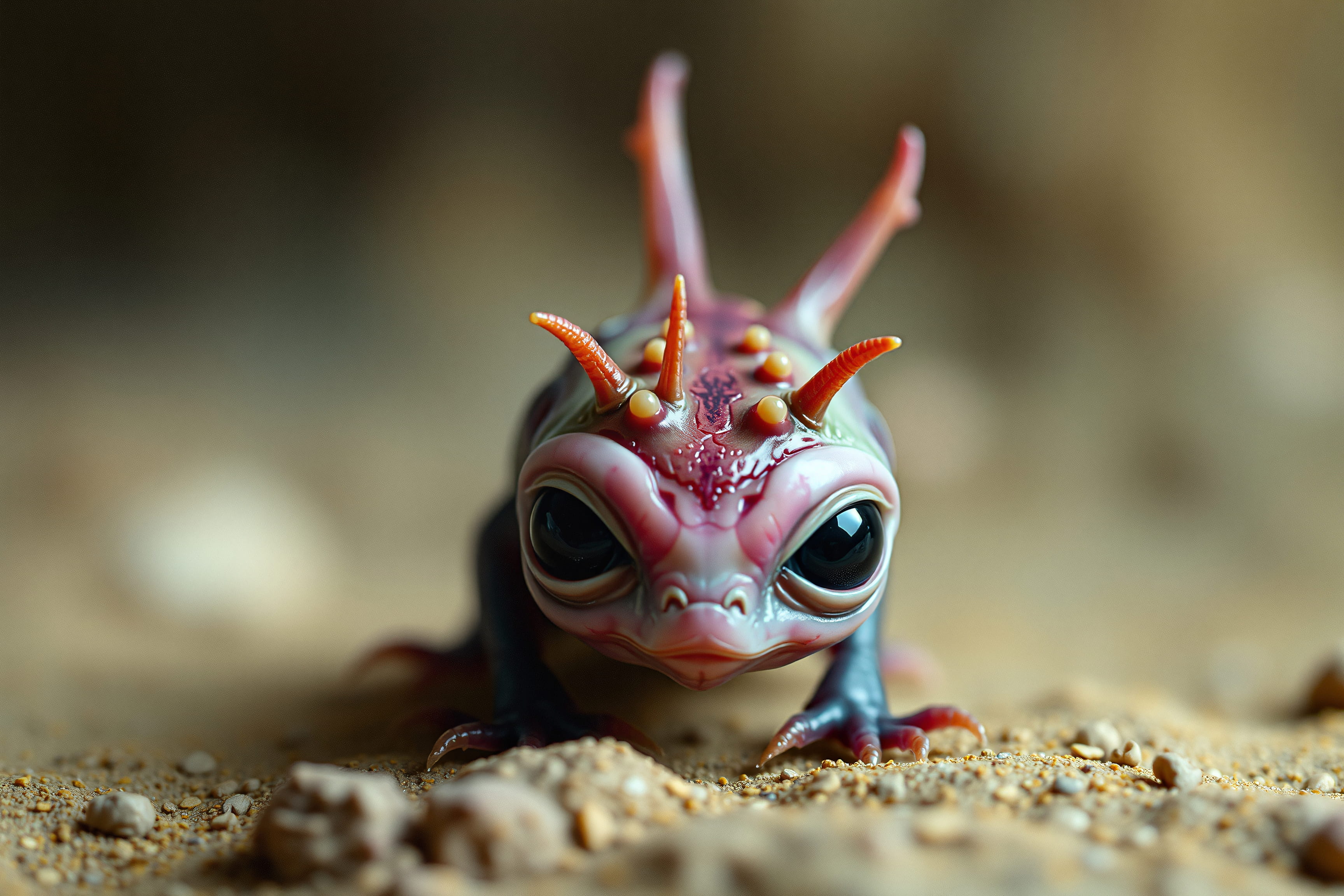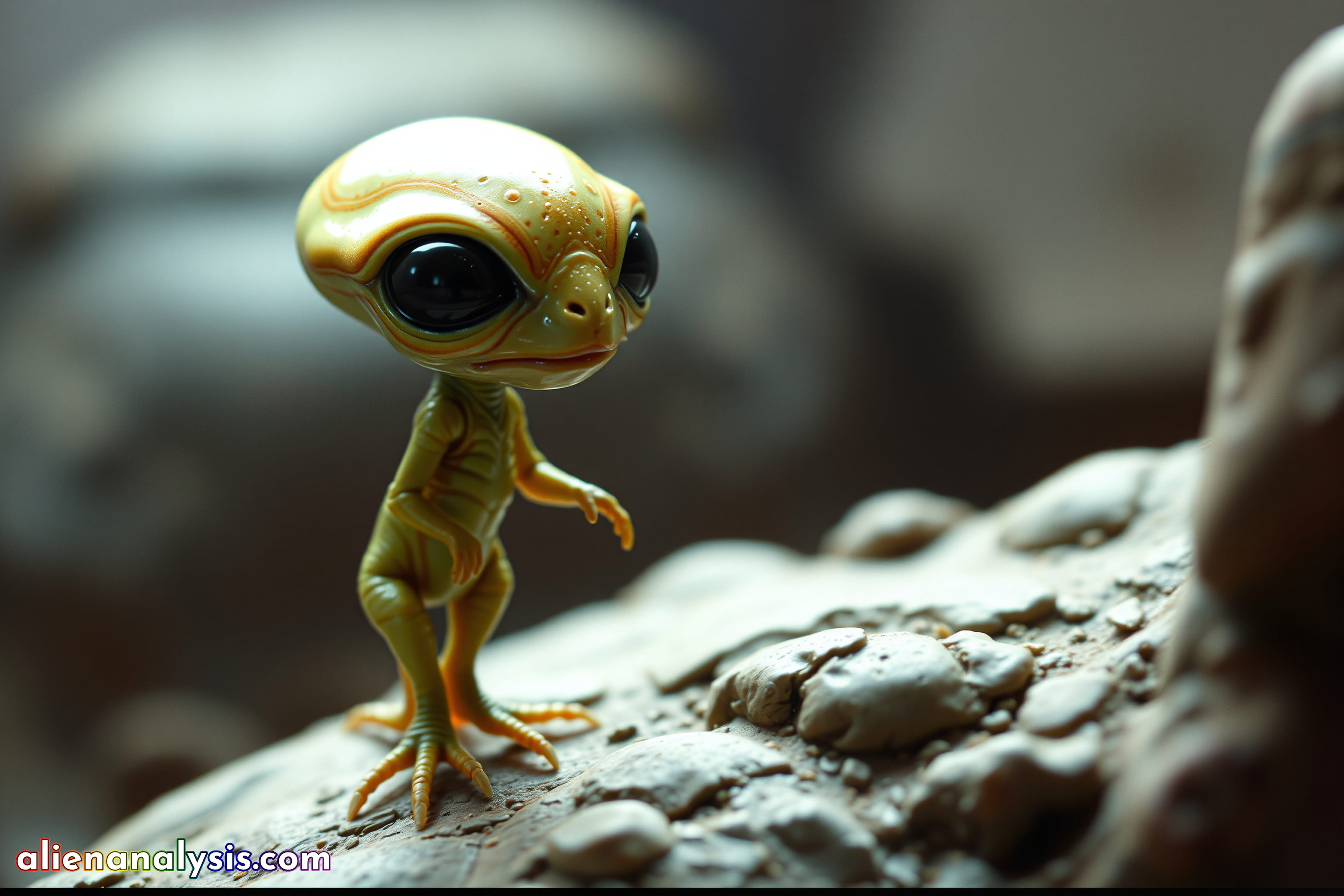
Parvaoculus amphibium

The entity in this image appears to be a juvenile member of a small, amphibious extraterrestrial species, potentially classified under the genus Parvaoculus amphibium, which can be translated to "small-eyed amphibian." This name is reflective of the creature’s morphology and possible lifestyle.
Morphological Characteristics:
Size and Proportions: This being is diminutive in size, with a body structure that suggests it is in a larval or juvenile stage of development. The large head in proportion to its body is typical of many species during early development, where brain growth outpaces other physical aspects.
Eyes: The most striking feature is the oversized, dark eyes, which likely provide excellent vision in low-light environments, such as dense forests, underwater habitats, or the twilight zones of a planet. The eyes are positioned forward, indicating a predator's binocular vision, essential for depth perception when hunting or navigating complex environments.
Skin Texture: The smooth, somewhat glossy skin suggests an amphibious nature, similar to Earth's amphibians, such as frogs or salamanders. This texture is likely suited for retaining moisture, which is vital for respiration through the skin, a common trait among aquatic or semi-aquatic organisms.
Limbs: The creature has four limbs, each ending in multiple digits with slight webbing visible between them. This webbing would aid in swimming, suggesting that the species is adapted to both land and water environments. The digits are slender and likely sensitive, possibly aiding in manipulating small objects or sensing vibrations in the environment.
Behavioral and Environmental Adaptations:
Habitat: The combination of amphibious traits indicates that this species inhabits environments with access to both land and water, such as marshes, swamps, or coastal areas. The webbed feet and moisture-retaining skin are well-suited for a lifestyle that requires frequent transitions between these two realms.
Communication: Given its juvenile appearance, this being may communicate through high-pitched vocalizations or bioluminescent displays on its skin, common among amphibious species that rely on visual or auditory signals to communicate in dark or murky environments. The large eyes might also pick up subtle light changes or bioluminescence from other creatures.
Diet and Behavior: As a juvenile, this being is likely omnivorous, feeding on small aquatic organisms, plant matter, and perhaps insects or other small invertebrates. The forward-facing eyes suggest a hunter's instinct, though at this stage of development, it may still be learning crucial survival skills.
Conclusion:
The Parvaoculus amphibium represents a young, developing member of a species that has adapted to thrive in both aquatic and terrestrial environments. Its morphology is indicative of a life that balances between land and water, with advanced sensory adaptations that allow it to navigate and survive in diverse, potentially challenging habitats. As it matures, this creature may develop more pronounced features that further refine its ecological niche, possibly growing larger and becoming a more adept hunter or forager.